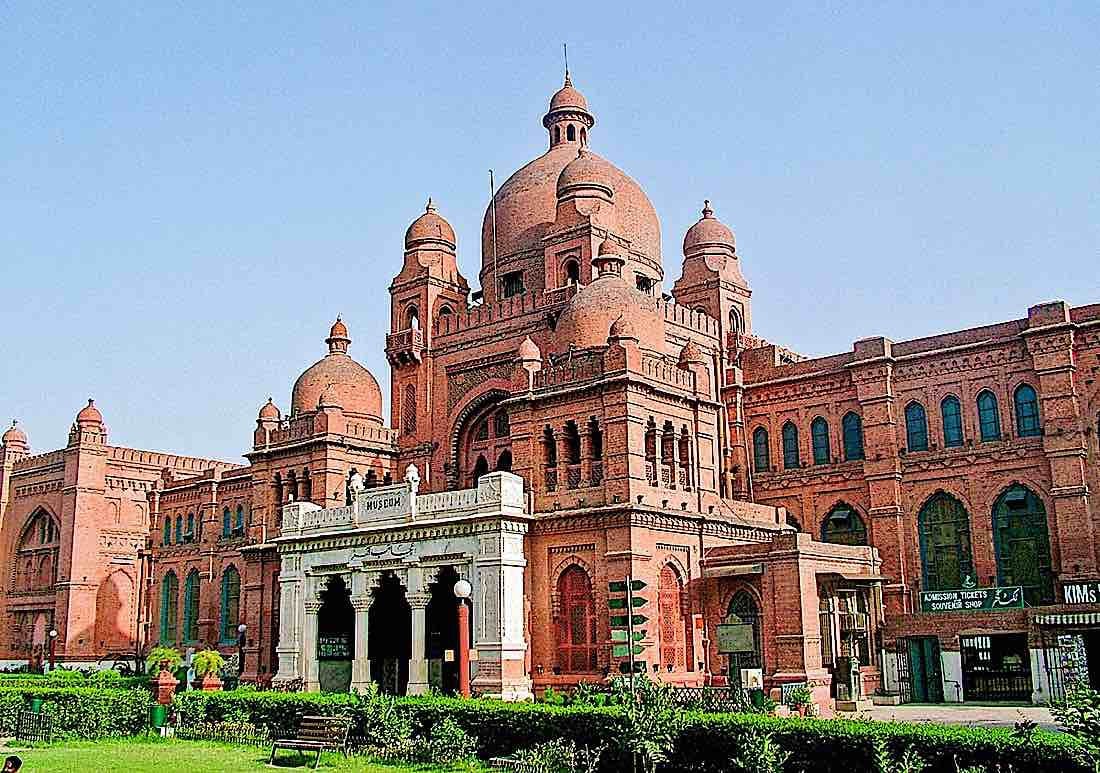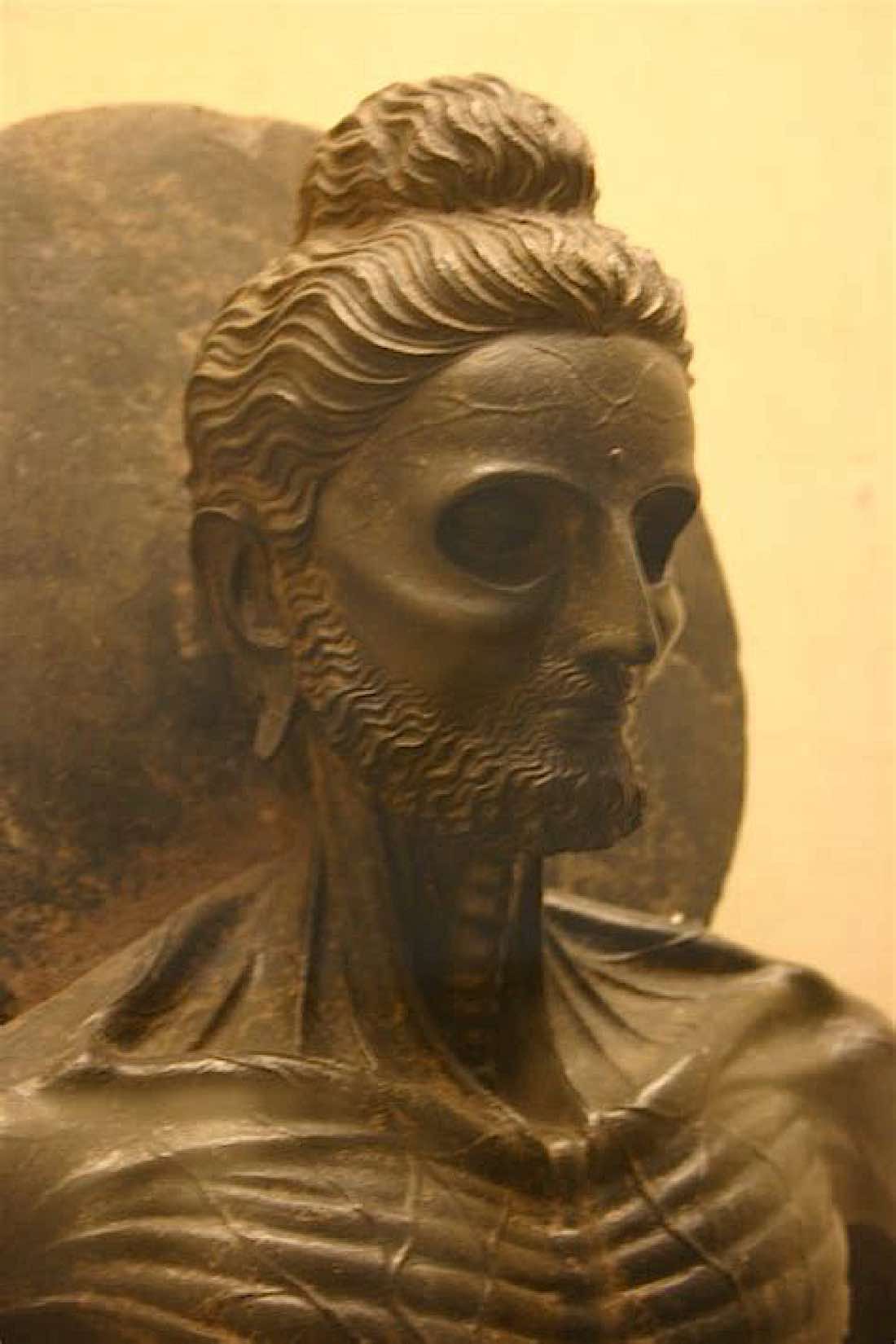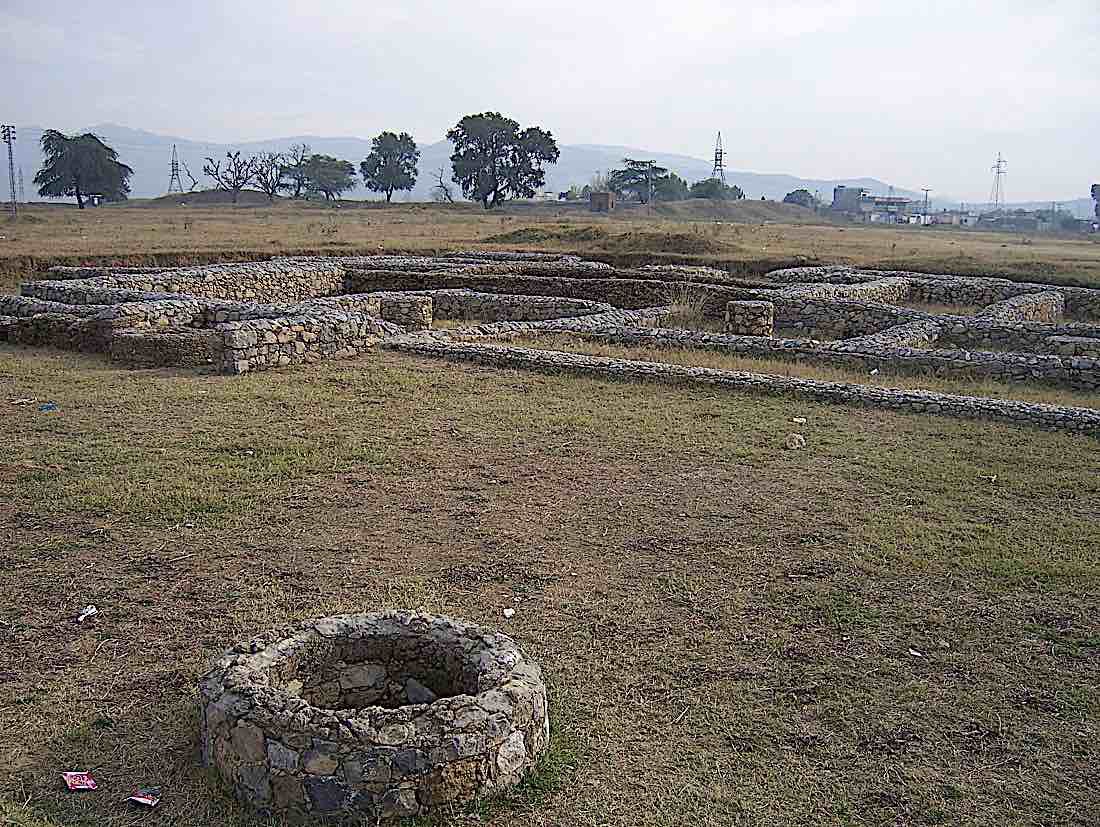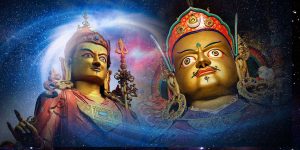Buddhist tourism in Pakistan: The Buddha’s gift to the world; a 20-picture tour of important Buddhist sites
Millions of people around the world embark annually on spiritual journeys to soothe their souls. Global religious tourism is one of the fastest growing segments in travel today. According to the UNWTO, 300-330 million tourists visit the globe’s most important religious sights every year.
To put things into better perspective, 2.5 million people per year visit Bodh Ghaya, the site of Buddha’s Enlightenment. [1] In 2017, 2.4 million Muslims travelled from all over the world to Saudi Arabia for the annual Hajj congregation. Around 4 million Christian pilgrims attended papal events, prayers services, or liturgies in the Vatican in 2016.
By Sarmad Ishfaq
Pakistan, with many important historical Buddhist sites, is noticeably trending in “religious tourism” due to its extensive heritage of Gandhara and Emperor Ashoka the Great. [Over 20 beautiful photos in feature.]

The Great Sleeping Buddha

Just last year, Pakistan’s Prime Minister Imran Khan announced his intention of increasing Buddhist tourism in the country — shortly after an announcement disclosing a newly unearthed 48-feet long sleeping Buddha near Bhamala Stupa in Haripur district.
The Sleeping Buddha is the world’s oldest sleeping Buddha and dates back to the 3rd century. Five hundred other Buddhism related objects were excavated in the same area further reinforcing the Buddhist legacy of Pakistan.

Pakistan’s tourism trends — Buddhist tourists
Pakistan may be the next big thing in Buddhist historical-site tourism, although for years it was held back by a bureaucratic visa system as well as the unstable security situation. With a renewed focus on Buddhist Tourism, this is changing, with a new streamlined visa process, the improved security situation, as well as the introduction of online visas.

In 2018, the British Backpacker Society listed the country as the #1 tourism destination worldwide. Tourism numbers have picked up in recent years with popular international vloggers and writers praising and promoting the country’s idyllic landscape as well as the locals’ profound hospitality.
However, the country is still lagging behind when compared to South Asian and global tourism numbers. Concerted efforts are being made to further grow tourism in the country. Effectively promoting the country’s Buddhist tourism potential is an essential avenue to realizing this goal.

Buddhist legacy in Pakistan — Gandhara heritage
Siddhartha Gautama, later revered as the Buddha, spread his teachings on the Indian subcontinent as long ago as 2600 years. Buddhism spread around Pakistan, Afghanistan, and India. [See map Note 3.] In what is today modern-day Pakistan and other areas, the famous Buddhist ruler Ashoka the Great (304 to 232 BCE) spread Buddhism and Buddhist monuments and art throughout the region. (Gandhara Civilization 1500 BCE to 515 CE.) [2]
Although, Buddhists who live in Pakistan only amount to a few thousand, more and more Buddhist tourists arrive each year. The most popular country for Buddhist tourists from Japan, China, Korea, and Thailand are Buddhist sites in India.

This hidden potential for Pakistan, however, is extraordinary, since Buddhism one of the world’s largest spiritual paths, with over 520 million followers. Most Buddhists live in Asia and are relatively close in proximity to the country. Pakistan’s neighbour, China, has around 244 million Buddhist followers.

Major Buddhist sights and artifacts
Taxila, in modern-day Punjab, Pakistan, is particularly important, because the Buddha himself travelled and taught in this part of the country. The city was a Buddhist centre for learning, architecture, sculpture, and art for over 1000 years.

The Taxila museum houses breath-taking relics and art from the Gandhara civilization. Most significantly, the Taxila Museum is home to the teeth and bone relics of the Lord Buddha.
The art in the museum revolves around the Buddha’s life stories and individual images. Stories have been carved in relief in stone and preserving images of Buddha’s life: his birth, his pre-enlightenment luxurious life, his departure from the palace to seek enlightenment, as well as post-enlightenment scenes such as the Buddha taming a mad elephant and even the Buddha’s Parinirvana. There are around 24 stories of the Buddha in stone relief here and more than 1,400 stone artefacts.

I have visited Taxila and the museum on a couple of occasions. The history and art is beautiful, although more should be done to facilitate tourists — especially coming from non-English speaking countries such as Japan, South Korea, and China.
The Korean scholar, Lee Kun Jong, on a visit to Taxila in 2018 raised similar concerns; he pointed out that the museum did not offer leaflets for foreigners and that there was a lack of informative plates at that time — leaving many tourists without understanding the significance of the artifacts related to the Buddha.

He suggested the tourism department or government should seek assistance from UNESCO and others while also initiating joint-collaborations with international universities. The professor stated that he had visited over 70 countries — and none had the tourist potential of Pakistan and that the country can become a hub for Buddhist tourists.

Taxila Museum artifacts
The artifacts in the Museum have been discovered from various sights in Taxila in Punjab province are a must-visit for any Buddhist, or admirer of the faith or antiquities. The attractions include the Bhir Mound (600-200 BCE), Dharmarajika Stupa and Monastery (300 BCE – 200 CE), Sirkap (200 BCE – 600 CE), Jaulian Monastery (200 – 600 CE) and Jandial Temple (c.250 BCE). The Sirkap city contains a round stupa which is considered to be one of the oldest in the subcontinent. The nearby Dharmarajika Stupa dates back to the 2nd century CE and is particularly noteworthy as it was built to house bone fragments of Lord Buddha.

Lahore Museum — a trove of Buddhist art
Staying in Punjab province, the Lahore Museum boasts a treasure trove of Buddhist art from the ancient Indo-Greek and Gandhara kingdoms. The Museum has a miniature stupa in great condition as well as a plethora of historic relics, but its crown jewel is the Gandhara-era “Fasting Buddha”.

The Khyber Pakhtunkhwa (KPK) province houses a huge Buddhist monastic complex, named Takht-i-Bahi. I have also personally visited this complex and it is one of my favourite Buddhism-related places in the country. It is near the city of Mardan and is nestled poignantly atop scenic green hills. The monastery has the honour of being the largest Buddhist remains in Gandhara as well as being listed in the UNESCO World Heritage list.

Beautiful Swat Valley
In Swat, KPK, one can find many stupas and monasteries spread around the picturesque mountains and valleys. Nicknamed Pakistan’s Switzerland, the Swat valley once housed as many as 1400 monasteries. The famous Gandhara School of Sculpture was also once present in the valley.

Some of the most prominent stupas in Swat include the Butkara Stupa near Mingora, the Amluk Dara Stupa near Nawagai village, and the Shingardar Stupa in Shingardar village. Apart from these, Swat also houses an iconic 7th century seated Buddha, in Jahanabad, sculpted in rock, which was defaced but restored in 2016 thanks to Italian archaeologists. This rock sculpture is considered one of the biggest in the region and ancient accounts depict this area as being a central Buddhist location.

Edict monuments of Ashoka, which are spread around the subcontinent, can also be found in Pakistan. These edicts are important to Buddhists as they come directly from Ashoka himself – one of the most important rulers in Buddhism’s history. Mansehra Rock Edicts are 14 edicts inscribed in rocks in the city of Mansehra, KPK, which date back to the 3rd century BC. The edicts inform the public of Ashoka’s Law of Piety and the expansion of Buddhism.

Gilgit-Baltistan — Manthal Buddha Rock
Conversely, in one of Pakistan’s most stunning regions, Gilgit-Baltistan, there are many more Buddhist wonders. For example, the Manthal Buddha Rock located near Skardu. This rock is engraved with a picture of the Buddha and is dated to be around from the 8th century. Other than this, the Sacred Rock of Hunza that is 30 feet high and dates back to the 1st Millennium AD can be found in Hunza, Gilgit-Baltistan.

Buddhist remains are also present in the Sindh province. A stupa can be found in the historic Mohenjo-daro archaeological site. Mohenjo-daro was a settlement in the ancient Indus Valley Civilization and is considered one the world’s earliest and most advanced cities. The stupa here magnificently towers and looks over the ancient city. Besides this, there are some beautiful Buddhist artefacts and statues in the National Museum of Pakistan (in Karachi, Sindh) also.

Other Buddhist sights can be found Balochistan province, as well as in Pakistan’s Azad Kashmir region.
Not just history — beautiful scenery
What really engages a tourist to these aforementioned sights is not only the association with Buddhism, but also the splendour of the areas where these stupas, rock carvings, monasteries, and urban centres are settled. The picturesque mountains and hills, the glistening lakes and gushing rivers, and the seemingly endless lush-green colours of the trees and foliage house epics of the Buddhist tradition.

Previous governments have played their part in reviving Pakistan’s Buddhist history, but perhaps not as much as they should have. In June 2011, the Pakistan Peoples Party government sent Buddhist relics from Gandhara to Sri Lanka to be displayed on the grand occasion of the 2,600th anniversary of the Buddha’s enlightenment. In 2016, the Muslim League Nawaz government sent relics including the Buddha’s teeth and bone fragments (from the Taxila Museum) to Sri Lanka for their Vesak festival. Seminars and mutual initiatives have also been held with Singapore and China to promote Pakistan’s Buddhist legacy in the recent past.

Still work to do — not enough tourist infrastructure
Although, efforts have been made to highlight Buddhism in the country, the work on ground has not nearly been enough. Besides Taxila, (which is under-par in terms of international standards), the rest of the historic sights scattered around Pakistan do not enjoy much or any tourist infrastructure or services. Apart from a signboard detailing some history of the sight, there is not much more. A foreigner, especially a non-English speaking one, will struggle to grasp the history, and significance of these wonders.
The more attention these sights get, the better they will be taken care of, as some sights are deteriorating due to lack of attention from government and international protection and recognition.

The tragedy of losing some of the greatest Buddhist heritage in the world would be immeasurable. Pakistan needs to spend money to protect its rich Buddhist legacy and needs to spread the world internationally to help them in this endeavour.
The current government seems proactive in improving both religious and leisure tourism in the country. Pakistanis are hoping for better tourism figures in the near future – especially owing to the current stable security situation of the country. Pakistan, with its focus on tourism is looking to leverage the China Pakistan Economic Corridor (part of China’s One Belt One Road) to market Pakistan’s Gandhara civilization to the countries of the South East, Far East, and beyond.

Pakistan needs to promote its rich culture and history so the world can see — and preserve — its mesmerizing Buddhist legacy. If tourism further proliferates, Pakistan could become a new hub for the Buddhist tourism.

NOTES
[1] “Bihar Registered Record Tourists Arrival in 2017”
[2] “Gandhara Civilization” Ancient History Encyclopedia
[3] Map license: Original image by Asia Society. Uploaded by Muhammad Bin Naveed, published on 23 June 2015 under the following license: Creative Commons: Attribution-NonCommercial-ShareAlike. This license lets others remix, tweak, and build upon this content non-commercially, as long as they credit the author and license their new creations under the identical terms. Please note that content linked from this page may have different licensing terms. Source Ancient.eu.
1 thought on “Buddhist tourism in Pakistan: The Buddha’s gift to the world; a 20-picture tour of important Buddhist sites”
Leave a Comment
More articles by this author
Search
Latest Features
Please support the "Spread the Dharma" mission as one of our heroic Dharma Supporting Members, or with a one-time donation.
Please Help Support the “Spread the Dharma” Mission!

Be a part of the noble mission as a supporting member or a patron, or a volunteer contributor of content.
The power of Dharma to help sentient beings, in part, lies in ensuring access to Buddha’s precious Dharma — the mission of Buddha Weekly. We can’t do it without you!
A non-profit association since 2007, Buddha Weekly published many feature articles, videos, and, podcasts. Please consider supporting the mission to preserve and “Spread the Dharma." Your support as either a patron or a supporting member helps defray the high costs of producing quality Dharma content. Thank you! Learn more here, or become one of our super karma heroes on Patreon.
Sarmad Ishfaq
Author | Buddha Weekly
Sarmad Ishfaq works as a research fellow for the Lahore Center for Peace Research. He completed his Masters in International Studies and graduated as the 'Top Graduate' from the University of Wollongong in Dubai. He has several publications in peer-reviewed journals and magazines in the areas of counter-terrorism/terrorism and the geopolitics of South Asia and the GCC.














Really read the paper. containing rich information’s regarding Buddhist heritage tourism.